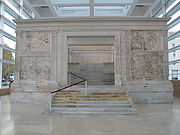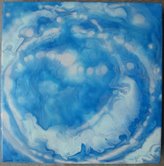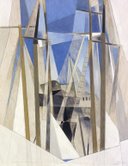All day yesterday, I had to hold my tongue regarding the vandalism at the Ara Pacis Museum, the monstrosity that Richard Meier created to hold the 2,000-year-old Altar of Piece. If you’ve been to Rome and seen it, you know exactly what I mean: Vandalism is never warranted, but I sympathize with those who did it. Others (Tony Shafrazi, for example) might
 have tried to say their act was a work of art itself, and you have to give the vandals credit for choosing paint in the colors of the Italian flag to throw at Meier’s creation and for leaving a toilet and rolls of toilet paper on the site, just in case the message wasn’t clear.
have tried to say their act was a work of art itself, and you have to give the vandals credit for choosing paint in the colors of the Italian flag to throw at Meier’s creation and for leaving a toilet and rolls of toilet paper on the site, just in case the message wasn’t clear.
Meier’s building is so absurdly out-of-place and out-of-scale, and such a monument to his ego, that I decline to show it here. (The same criticisms could be made of most of his museums, btw, but that’s another story.) At right is the altar itself.
But all of this has been said before, which is why I remained silent until I discovered the good news about the Ara Pacis, which wasn’t reported by the BBC or the New York Times or the Associated Press.
The good news was reported by ANSA, the Italian news agency. Rome’s mayor, Gianni Alemanno, had promised during his election campaign to tear down the building down, but he has since backed off. Instead, ANSA said, the mayor has begun talks with Meier to ”rethink” its design. He said:
This has happened right at the time that the (city council) is speaking to Richard Meier to find an architectural solution that could improve the urban impact of the museum.
Let’s hope Meier finally listens and modifies his design. The resolution can’t come soon enough.
Meantime, here’s the link to the ANSA story, which also has more on the possible perp:
Graziano Cecchini, the self-styled ‘Futur-rista’ who made world headlines after tipping non-permanent red dye into the Trevi Fountain in 2007 and sending about half a million coloured balls thundering down Rome’s Spanish Steps in 2008.
Cecchini was ambiguous about his involvement but said: ”Intellectually I claim responsibility for this beautiful action – there should be one a day.”




